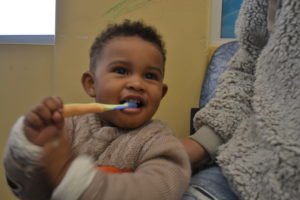
Why Cavities in Toddlers are More Serious Than You Think
As a parent, you have a lot to think about. When it comes to health, it’s not uncommon to overlook things you can’t easily see, like cavities.
Cavities are caused by tooth decay, and they’re common in children. In fact, around two in every five children have cavities in their baby teeth, and about one in every five children under 11 have cavities in their adult (or permanent) teeth.
What Causes Cavities in Toddlers?
Infants and toddlers often develop cavities from using bottles and sippy cups, and from nursing. All these things provide nutrition or comfort for the child, but the sugar can damage their teeth. Children who fall asleep with a bottle (or while nursing) are especially at risk, because the sugar sits on their teeth while they sleep.

How do Cavities Affect Toddlers?
Bacteria from a cavity can lead to an abscessed tooth – a painful reaction at the tooth’s root. In rare cases, bacteria enter the bloodstream and cause severe health issues.
How to Prevent Cavities in Toddlers
Developing healthy habits early on is the best way to prevent cavities. Here are some tips for keeping your toddler cavity-free:
- Discourage your toddler from falling asleep with a bottle.
- Fill sippy cups with water instead of sugary drinks, like juice.
- Brush your toddlers twice a day (or after eating) and begin flossing as soon as there are two teeth that touch each other.
- Take your toddler to see a dentist every six months.
When Should I Take My Child to the Dentist?
Your child should see a dentist for the first time around their first birthday, or about six months after their first tooth comes in. It’s essential you keep up with check-ups – a dentist can stop a minor problem from turning into a major one.
Looking for a great family dentist? Find a Kool Smiles partner dentist near you!
